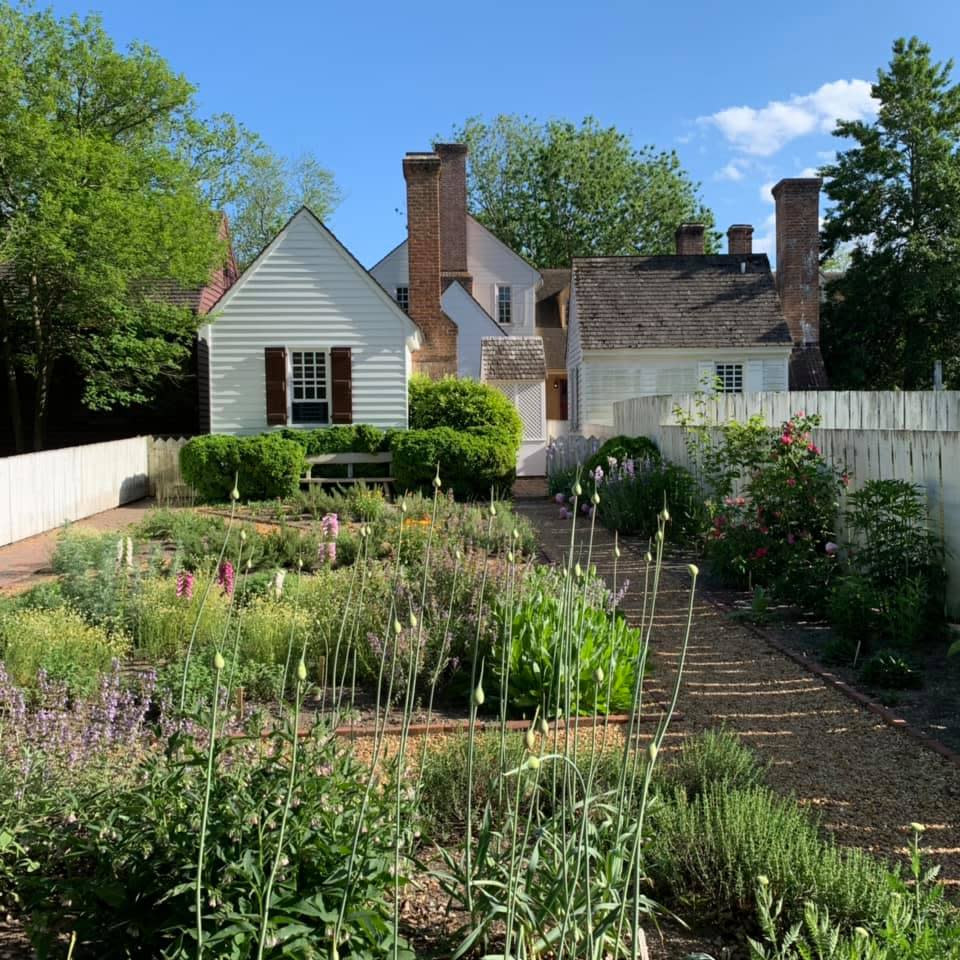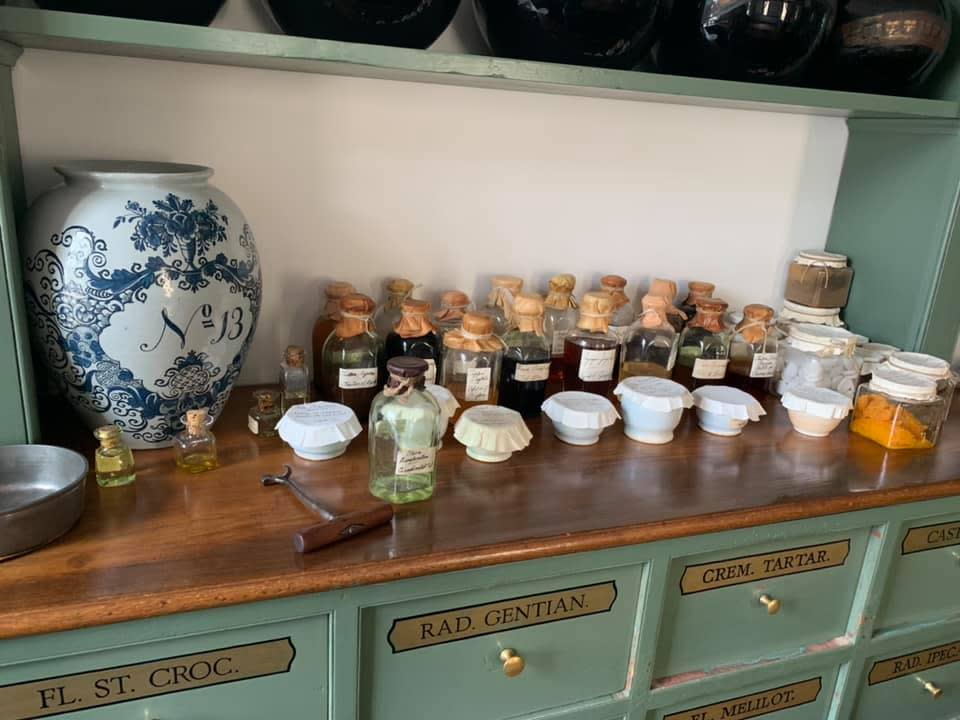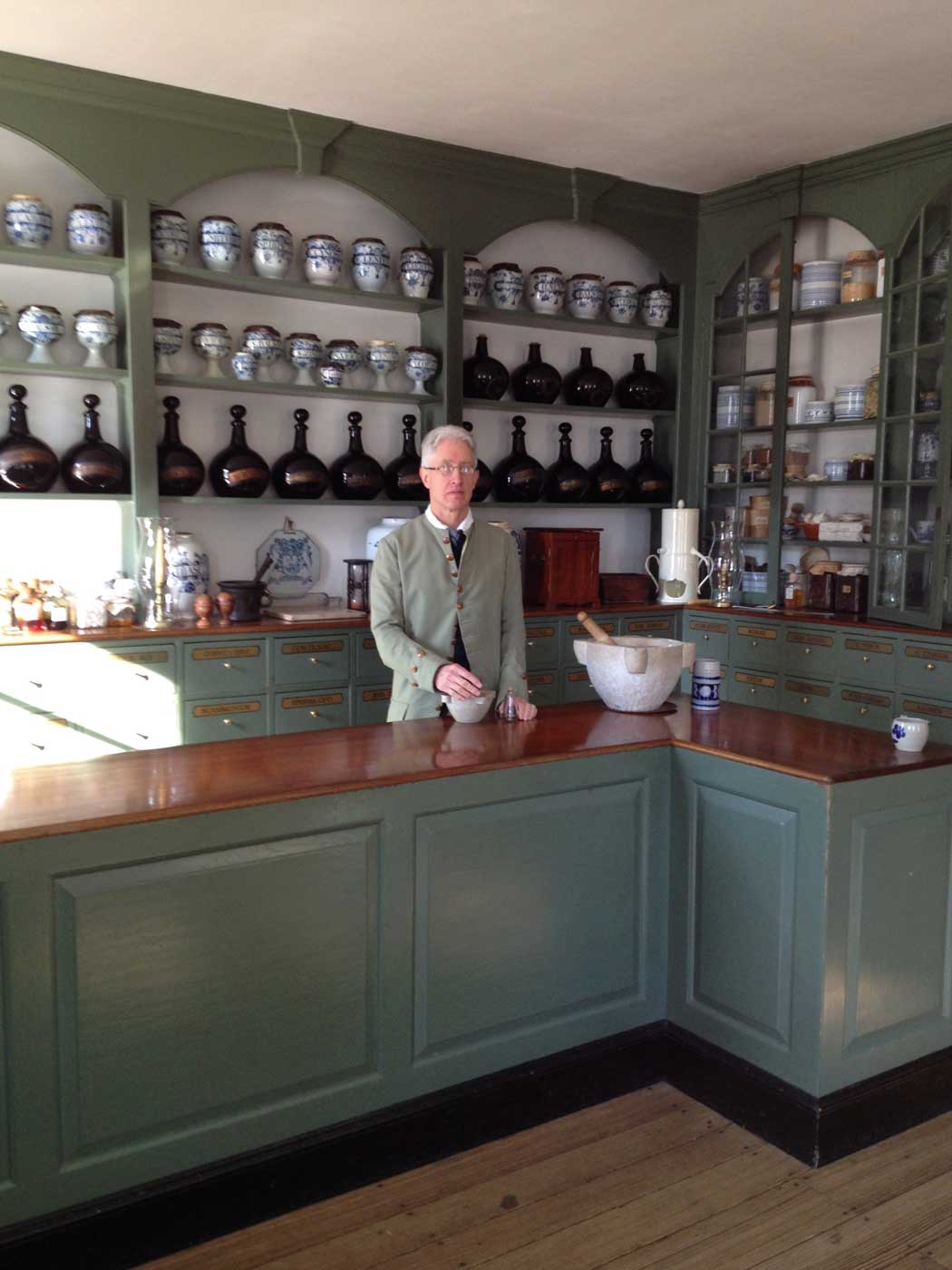How would Williamsburg’s apothecaries have responded to this a modern pandemic?
COVID-19 infection with its attendant morbidity and mortality dominates our current national discourse. Experts work around-the-clock to learn about this novel threat: its source, modes of transmission, contagiousness, clinical manifestations, pathology, mortality, and potential treatments. If we transport ourselves back to the 18th century, how would Williamsburg doctors like William Pasteur and John Minson Galt understand the pandemic? Working out of their shop on Duke of Gloucester Street, how would they deal with the hysteria certain to be present, as it is today?
One must bear in mind that 18th-century medicine was limited by the available technologies, just as medicine is today. Simplistically, this means they were limited to using their senses. Microscopy existed, but generally as a hobby more than a medical tool. Autopsies were performed, typically with gross (as opposed to microscopic) visual observations made. Identification of chemicals is a 19th-century advance. Louis Pasteur did not publish his Germ Theory until 1878 and radiographs were not discovered until 1895. With this basic construct, let’s examine how Dr. Pasteur and Dr. Galt would understand our modern situation.

First, they possess a basic concept of contagion, recognizing for example that smallpox spreads from one person to another just as the bite of a rabid dog may result in the same symptoms in the person bitten. They even use modern vocabulary when speaking of the particle moving from one to another, calling it a “virus,” “infection,” or “contagion.” Eighteenth-century doctors do not yet understand the nature of this particle, however.
Second, Dr. Pasteur and Dr. Galt would be quite skilled in observing the clinical manifestations of the disease, since observation is the bedrock of 18th-century diagnosis. Fever is identified by touching the skin, feeling heat, and appreciating an elevated pulse rate. Difficulty breathing manifests as labored breathing and/or rapid breaths. Cough and fatigue manifest as, well, cough and fatigue.
Third, mortality statistics were noted, as Dr. Boylston and Cotton Mather documented during Boston’s 1721 smallpox epidemic. Bear in mind that death was a much more familiar acquaintance to people in the 1700s as compared to today. A two percent mortality rate would not be considered shocking to Pasteur and Galt.
Fourth, treatment of disease in colonial times consisted of allaying symptoms. Medical doctors were quite proficient in this and had in their arsenal a multitude of plant, animal and mineral products with which to compound medicines. For the most part, cure remained beyond their reach.

According to the World Health Organization and the Centers for Disease Control and Prevention most symptomatic people with COVID-19 infection have fever, a dry cough, and fatigue. About one in six of those infected become seriously ill with difficulty breathing. Seriously ill patients typically are older and have underlying health problems.
How then would Dr. Pasteur and Dr. Galt calm their neighbors’ fears and address COVID-19 infection? They would do so by effectively treating symptoms. Such treatment likely would involve willow tree bark for fever. Willow bark contains salicin; salicylic acid is a component of Aspirin. Cinchona Tree bark may also have been used to treat COVID-19 fever, but its most effective use was in treating “intermittent fever.” Interestingly, recent studies in Asia suggest Chloroquine prevents the spread of COVID-19 and reduces the length of illness. Cinchona Tree bark contains quinine, and quinine is chemically related to Chloroquine.
Cough suppression is achieved by using dark chocolate, licorice root, and/or opium products. In his 1753 dispensatory, William Lewis writes that coffee is used to “prevent or remove a disposition to sleepiness.” A nice, warm cup of coffee to counter fatigue might therefore be part of the therapeutic regimen. Speaking of “regimen,” in the 18th century the term referred to modification of one’s diet, activity, and environment, and was always a therapeutic consideration. An individual with a cold, for example, was told to stay warm, limit exercise, and drink warm, easily digested liquids. In other words, stay home in bed and eat chicken broth! This sound advice would pertain to COVID-19 infection in both colonial times as well as today.
Dr. Pasteur and Dr. Galt would surely distinguish routine COVID-19 infection from the more serious illness involving difficulty breathing. Diagnosis is based on observation, and one who has difficulty breathing looks markedly different than one with a dry cough. Additionally, the populations involved are not the same. Those who are more seriously ill tend to be older whereas those with milder disease tend to be younger in age. Because of the different symptoms and populations, in the 18th century these clinical courses would not be considered different manifestations of the same infection, but rather as distinct diseases.

In the face of an epidemic, Colonial Williamsburg residents would turn to medical professionals for advice, diagnosis and treatment, just as we do today. Not conceptualizing or understanding the nature of a virus (modern usage) or immunology, diagnosis would be not by specialized testing but by symptoms. Dr. Pasteur and Dr. Galt would quite ably treat those symptoms using period medicines. One phenomenon you would not see 250 years ago: a run on toilet paper!
Mark Henley is the Pasteur & Galt Apothecary Assistant, joining the shop in October 2019. He is a retired pediatrician who enjoys history.